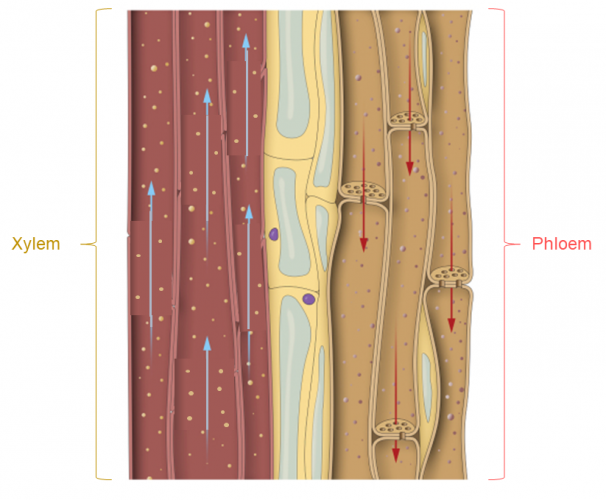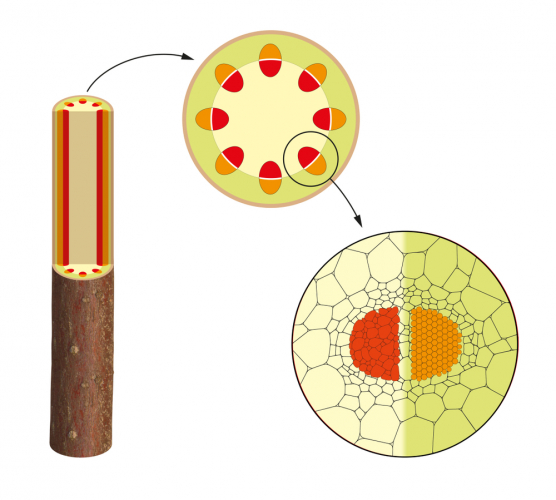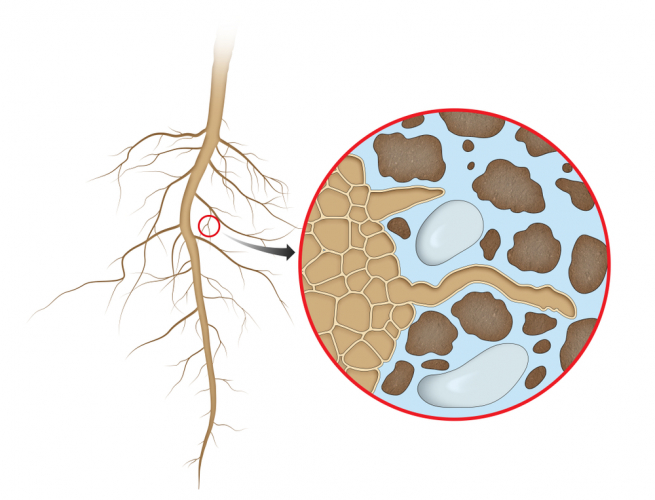In the same way as humans have arteries and veins to carry blood, plants have their own ways of transporting substances so that they can survive.
Plants have two main transport systems: xylem and phloem.
And between them there are four types of specialised cells we need to know: the vessels of the xylem, sieve tubes and companion cells of the phloem, and root hair cells in the roots.

Xylem:
Water and minerals are transported by xylem.
They are hollow tubes with continuous walls that are made from specialised dead cells called vessels.
Looking at the xylem in the picture below, these cells are now empty and have no end walls (no ceilings or floors), so they can be joined together smoothly, helping the water flow easily.
This secure structure allows the transport of water and minerals upwards from the roots and through the stem - so think root to leaves!
Surprisingly, this antigravity direction is what we call a physical process, meaning the xylem doesn’t need energy to push its water contents around.

Phloem:
Phloem transports sugars and amino acids around the plant in a dissolved form, and they are transported up and down to where the plant needs them.
Phloem has its own term for this transport called translocation.
The phloem is actually a combination of two cell types, both of which are alive, depend on each other and are well adapted for their roles (see the diagram above).
Sieve tube cells have no nuclei and are stacked on top of each other, making the tunnels of the phloem. The cytoplasm of the neighbouring cells interacts through the gaps in the ends of each cell.
Translocation needs energy, which companion cells provide, so every sieve tube gets at least one companion cell so that it can function!

If you look through a microscope, a section of stem looks very different to a root because of the different arrangements of xylem and phloem.
In the roots, xylem is in the middle with phloem around the outside, but in the stem they are arranged in pairs.

Root hair cells:
These allow a plant to absorb water from the soil using osmosis.
They are specially adapted to be long and thin so that they can get between pieces of soil and they have a larger surface area for water absorption.
Osmosis is the movement of water from a high water concentration to a lower water concentration, with the difference in water levels creating a natural gradient that makes water diffuse across.
The gradient here is dependent on there being less water in the root hair cytoplasm than in the soil, and so as water comes in, the cell also actively transports mineral salts from their low concentration in the soil to an already high concentration in the cytoplasm, maintaining the influx of water.
And as active transport always needs energy, these cells respire a lot to make the energy the cell needs to be able to function.
Now it's time for some questions!








